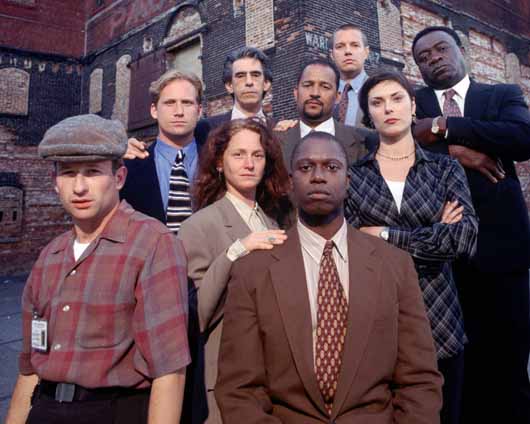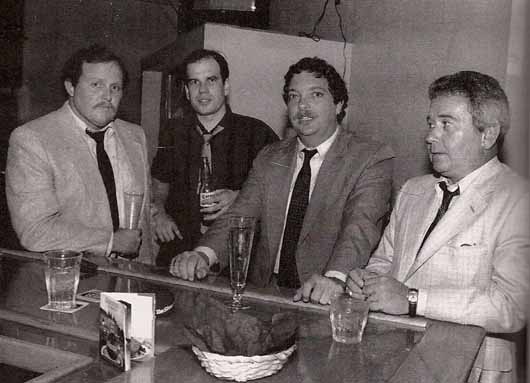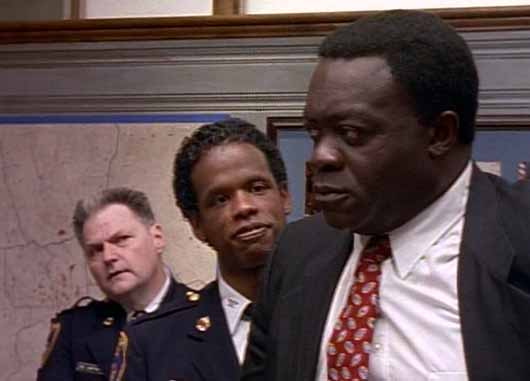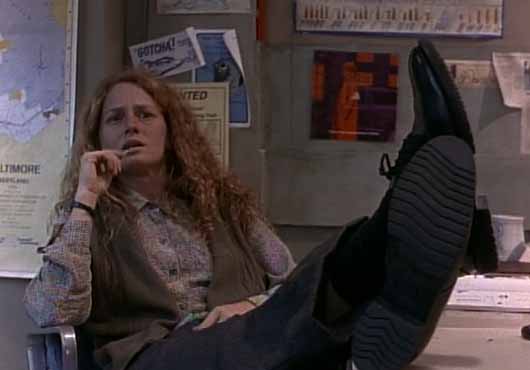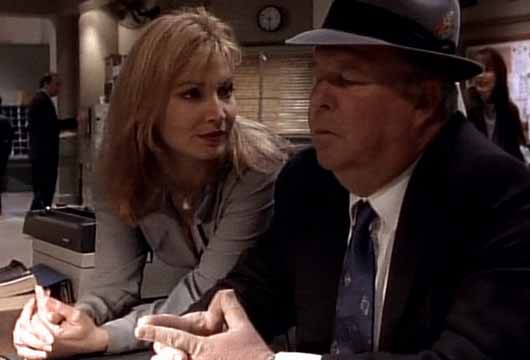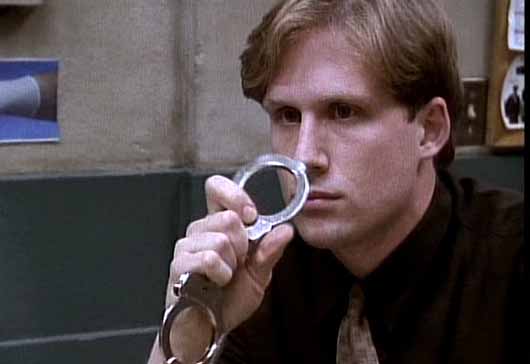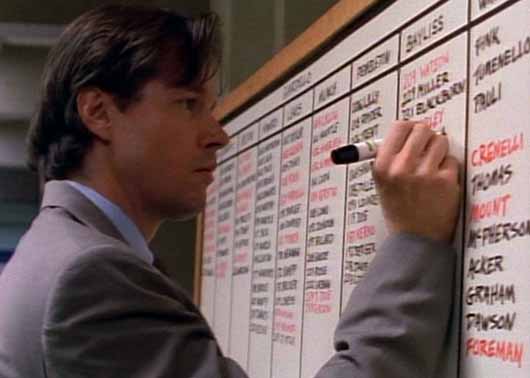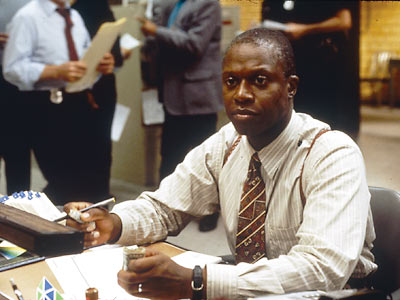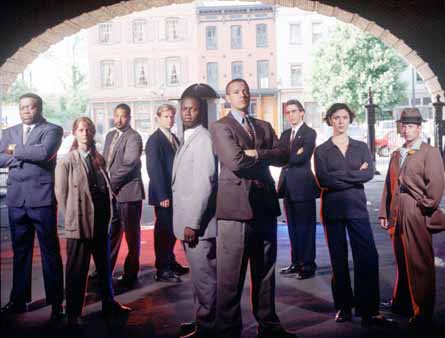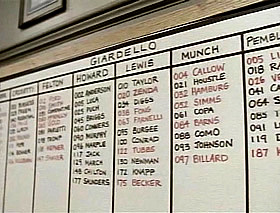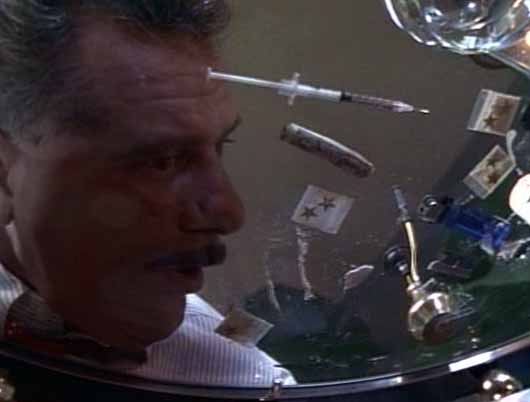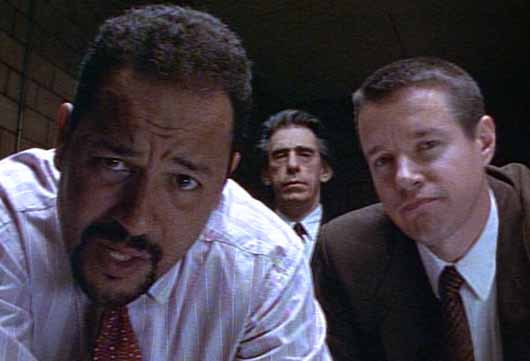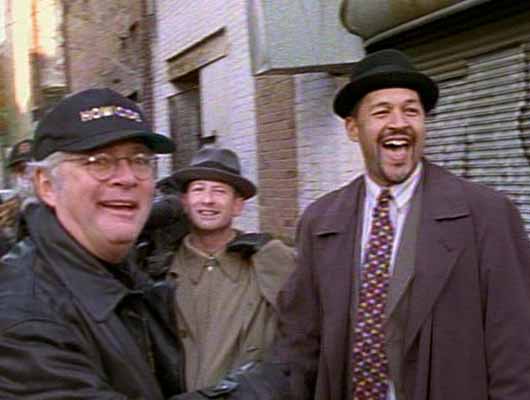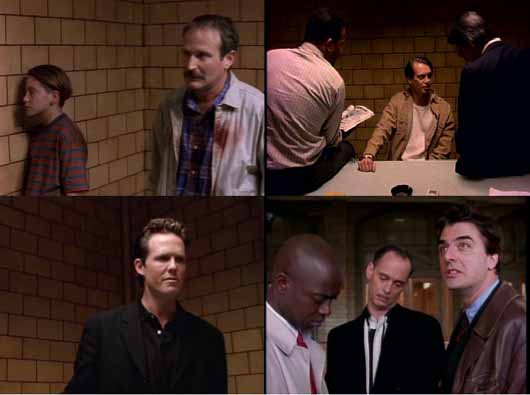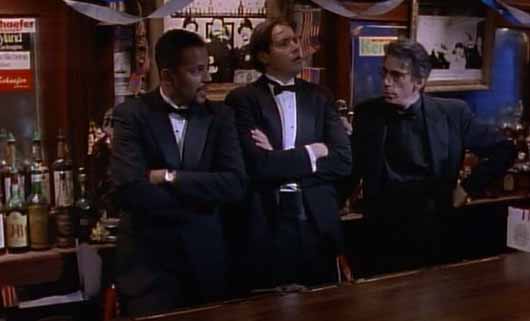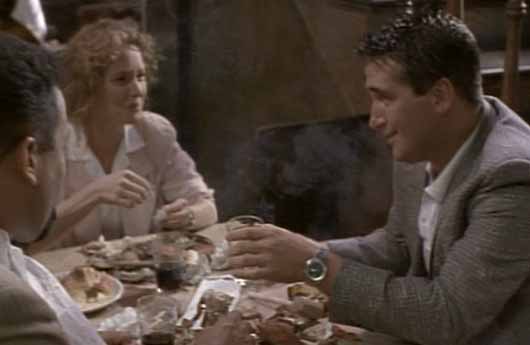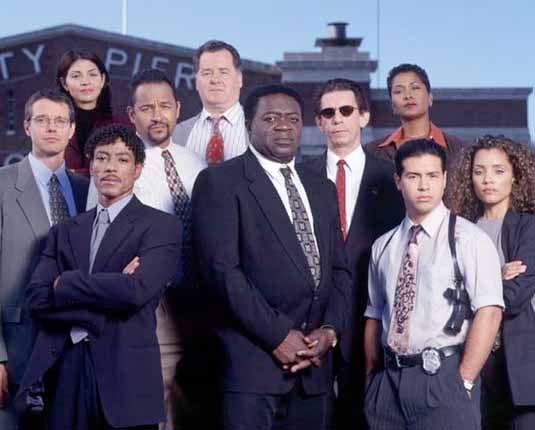 TV
TV In Which We Receive A Police Escort At All Times
 Monday, August 17, 2015 at 11:29AM
Monday, August 17, 2015 at 11:29AM 
Oscar Isaac's Digestive Tract
by DICK CHENEY
Show Me A Hero
creators David Simon, William F. Zorzi & Paul Haggis
Nick Wasicsko (Oscar Isaac) flirts with a secretary at City Hall in Yonkers. He corners her and leans over, letting the bacon and gasoline smell of all the men in this New York City suburb wash over her in an awesome wave. He won't leave her alone, and demands they go out for "steaks." When she is ready to be taken home, he demurs and lets her find her own ride, explaining that he is too hyped up and tired at the same time, mixing Maalox in with his usual vodka drink.
 Creeping on the secretaries at City Hall does not remind one of heroism necessarily.
Creeping on the secretaries at City Hall does not remind one of heroism necessarily.
Obnoxious Bruce Springsteen plays throughout. David Simon (David Simon) is from Washington D.C., so he probably does not understand that Bruce Springsteen is closely associated with New Jersey. No one in Show Me A Hero, an HBO miniseries about how poor ethnic minorities were basically doomed until the federal government made available public housing in the area, openly dislikes Wasicsko, and most feel sorry for him. He has no choice but to support compliance with the ruling of a Jewish judge (Bob Balaban), and to order to signify his agreement, he wears the world's worst wig.
 After she gets off her shift, it's off to the runway where she earns her children's lunch money.
After she gets off her shift, it's off to the runway where she earns her children's lunch money.
Alma Febles (Ilfenesh Hadera) is a Dominican woman raising three kids who can't afford anything except a cute winter sweater and a movie ticket after her salary is deducted from her rent. She relocates her family to the DR and everything is perfect, but she can't find gainful employment so she heads back to America, where she wears the most adorable onesie I have ever seen. Show Me A Hero is a True Story™ but it feels about as real as Hadera looks in this part.
 I was in Wal-Mart the other day and there was an Ethnic Hair Care section. True Story.
I was in Wal-Mart the other day and there was an Ethnic Hair Care section. True Story.
Isaac seems to be playing the exact character he did in A Most Violent Year, and he is even wearing the same hairpieces. The struggle for housing rights mostly takes place in courtrooms and offices. It was necessary to make this more exciting for the purposes of television so the awful music of Bruce Springsteen was brought into the diegesis, and the visual composition of the scenes is 13.9 percent the legs of Winona Ryder:
 Gentlemen, one of you will go home with Winona. Reach for the piece of paper under your chairs.
Gentlemen, one of you will go home with Winona. Reach for the piece of paper under your chairs.
Ryder plays Vincenza Restiano, a longtime New York politican whose legs were the central part of this important legal battle. In one scene she asks Wasicsko to meet up with her so she can explain how depressed she is that she was voted out of office for a white man. "Give me your stress!" she begs him.
 The best blouses on premium cable.
The best blouses on premium cable.
Instead he gives his stress to the secretary Nay (Carla Quevedo) who also lives with her mother. They bond over this important commonality. An important subplot features Doreen Henderson (Natalie Paul), an African-American who goes from the suburbs to the projects and watches her life fall apart. These sad stories took place less than thirty years ago, and they do not seem very dated at all. The problem with making history out of them is that it makes the production of Show Me A Hero seem like the dismissal of a worse time and place.
 Nobody was like, 'Maybe using Bruce Springsteen songs will make people think this is about AIDS'?
Nobody was like, 'Maybe using Bruce Springsteen songs will make people think this is about AIDS'?
Yonkers still exists. I was once there meeting with an official of the Catholic Church. He offered me a cigar and my choice of altar boy. New York is still hopelessly corrupt; the mayor seems to make all his important decisions based on which lobby has most recently absorbed the dust and decay from the underside of his scrotum. New York is a fucking mess: horses continue to shit all over Central Park.
Show Me A Hero was directed by Paul Haggis, since HBO owed him a favor after he appeared as an ex-Scientologist in Going Clear. He directs the show exactly like a lazier version of The Wire, which is everything it did not need. The overseriousness and clear black and white morality of Simon's writing reappears in Show Me A Hero, except we are a bit more inured to it by now. We were betrayed by The Wire: it now seems a terrible thing to make something look like a documentary when it cannot be.
 You know David L. Simon wrote this when in this three minute scene, the judge walked to his office and read the newspaper.
You know David L. Simon wrote this when in this three minute scene, the judge walked to his office and read the newspaper.
The Wire admittedly had that feeling of versimilitude, but Show Me A Hero descends into silliness when it begins to try to give humanity to the anti-Semitic and anti-black homeowners in the Yonkers area. Simon dresses Catherine Keener as a senior citizen in a gray wig for some reason as one of these anti-integrationists. She looks absolutely absurd laughing when her anti-Semitic friends throw dirty diapers at a city council meeting held in full view of the public.
There is a funny scene in the first episode of Show Me A Hero where Simon has a leader of the NAACP confessing that he is not sure imposing federal housing in the Yonkers area is even the right thing to do. He explains his resignation to lawyer Michael H. Sussman (Jon Bernthal), who absorbs the cynicism into his own worldview. The show does not really attempt to explain why the government was set on doing this in the first place, which is kind of important to the whole story.
 The Dominican Republic looks like Eden in this show.
The Dominican Republic looks like Eden in this show.
The direction here is all wrong. The documentary feel of The Wire — the handheld cam, the view of people in their natural habitats — has vanished, replaced by a smooth officiousness that makes Yonkers neater and tidier than it ever was. Although Isaac's charisma is like a volcano, focusing on the doomed Wasicsko was a mistake. At times Show Me A Hero feeds on the chaos of the political process so that the show almost transcends being a mere echo of Mr. Simon's past ventures, but it always retreats to Isaac doing the dull work of a politican. We never have very much fun.
Dick Cheney is the senior contributor to This Recording.

"Loving the Alien" - Miss Kittin & the Hacker (mp3)
"Leather Forever" - Miss Kittin & the Hacker (mp3)

 david simon,
david simon,  oscar isaac,
oscar isaac,  show me a hero
show me a hero 





























